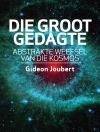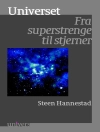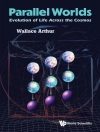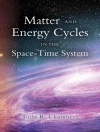This scientifically sound, yet easily readable book provides the fundamentals necessary to understand today’s energy and climate problems and provides possible answers based on current technology such as solar, water and geothermal power. Moreover, it introduces the reader to new concepts that are already or may soon be realized, such as nuclear fusion or a hydrogen-based economy.
Aimed at a wide readership ranging from educated laypeople and students to practitioners in engineering and environmental science.
Tabella dei contenuti
Acknowledgements
Prologue
PART I: QUESTIONS
Introduction
Ancient Days and Modern Times
Ice Ages – Past and Future
Global Warming versus Returning Glaciers
Earth’s Fossil Fuel Supply
Nuclear Power
PART II: ANSWERS
Introduction
Solar Energy
Wind, Waves, and Tides
Going with the Flow: Water, Dams, and Hydropower
Geothermal Energy: Energy from the Earth Itself
Efficiency, Conservation, and Hybrid Cars
Energy Storage: Macro to Micro
Green Fuel: Biodiesel, Alcohol, and Biomass
PART III: DREAMS
Introduction
Breeding Nuclear Fuel
Nuclear Fusion: Engine of the Sun
Power from the Ocean: Thermal and Salinity Gradients
Fuel Cells: Hydrogen, Alcohol, and Coal
Magnetohydrodynamics and Power Plants
Thermionics and the Single Fuel Home
Artificial Photosynthesis and Water Splitting
Planetary Engineering and Terraforming
Space Solar Power: Energy and the Final Frontier
PART IV: NIGHTMARES
Introduction
Alternative Futures
ORBITuary? Disasters That Could Occur
Circa l’autore
Franklin Hadley Cocks is Chairman of the Department of Mechanical Engineering and Materials Science at the Pratt School of Engineering of Duke University in Durham, North Carolina, USA. Professor Cocks has taught courses on energy and the environment for decades and has published over 150 technical papers and more than 20 US patents. He earned all his degrees from MIT and was a Fulbright Fellow at Imperial College, London, and a Visiting Scholar at Harvard. At Tyco Laboratories he developed the silicon ribbon crystal growth method now used to produce silicon solar cells on an industrial scale. His foamed-metal payload was flown on the Columbia shuttle in 1991. He was a consultant to Los Alamos National Laboratory for many years and more recently for the Department of Energy.












